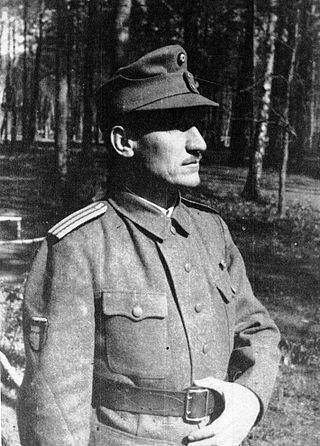
Shalva Maglakelidze was a Georgian jurist, politician and military commander. A high-ranking official in briefly independent Georgia (1918–1921), he was one of the leaders of anti-Soviet movement of Georgian émigrés in Europe. During World War II Maglakelidze was a commander in the Wehrmacht's Georgische Legion. Abducted from West Germany by the Soviet security agents, he was allowed to reside, under police supervision, in his native Georgia where he practiced law and died in Tbilisi.
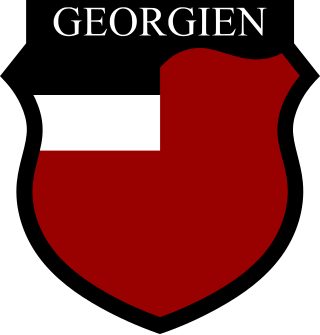
The Georgian Legion was a military formation of Nazi Germany during World War II, composed of ethnic Georgians. It was formed by Georgian émigrés and prisoners of war; its declared aim was the eventual restoration of Georgia's independence from the Soviet Union under Nazi Party's doctrine and supervision. Some components of the Georgian Legion fell under the operational control of Waffen-SS.
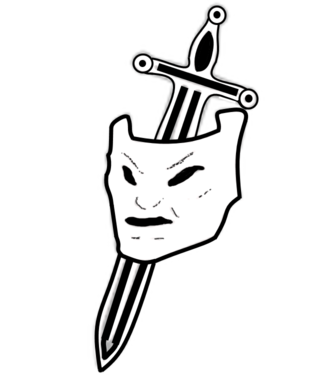
The Brandenburgers were members of Nazi Germany's Wehrmacht special forces unit during World War II.

The Walloon Legion was a unit of the German Army (Wehrmacht) and later of the Waffen-SS recruited among French-speaking collaborationists in German-occupied Belgium during World War II. It was formed in the aftermath of the German invasion of the Soviet Union and fought on the Eastern Front alongside similar formations from other parts of German-occupied Western Europe.
Azerbaijani SS volunteer formations were recruited from prisoners of war, mainly from the Soviet Union and the countries annexed by it after 1939. Nazi Germany organised them to fight against the Soviet Union.

The Battle of the Caucasus was a series of Axis and Soviet operations in the Caucasus as part of the Eastern Front of World War II. On 25 July 1942, German troops captured Rostov-on-Don, opening the Caucasus region of the southern Soviet Union to the Germans and threatening the oil fields beyond at Maikop, Grozny, and ultimately Baku. Two days prior, Adolf Hitler had issued a directive to launch an operation into the Caucasus named Operation Edelweiß. German forces were compelled to withdraw from the area that winter as Operation Little Saturn threatened to cut them off.
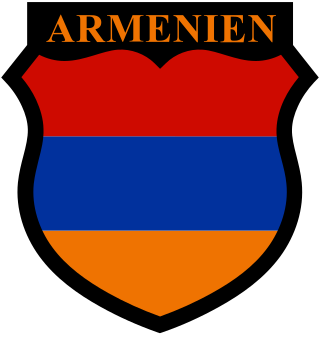
The Armenian Legion was a military unit in the German Army during World War II. It primarily consisted of Soviet Armenians, who wanted to fight the Soviets for an independent Armenia and commanded by General Drastamat Kanayan.

Kaminski Brigade, also known as Waffen-Sturm-Brigade RONA, was a collaborationist formation composed of Russian nationals from the territory of the Lokot Autonomy in Axis-occupied areas of the RSFSR, Soviet Union on the Eastern Front.

The 1st Cossack Cavalry Division was a Russian Cossack division of the German Army that served during World War II. It was created on the Eastern Front mostly with Don Cossacks already serving in the Wehrmacht, those who escaped from the advancing Red Army and Soviet POWs. In 1944, the division was transferred to the Waffen SS, becoming part of the XV SS Cossack Cavalry Corps, established in February 1945. At the end of the war, the unit ceased to exist.

Abdurrahman Fatalibeyli, born Abo Dudanginski, was a Soviet army major who defected to the German forces during World War II.

The Azerbaijani Legion was one of the foreign units of the Wehrmacht. It was formed in December 1941 on the Eastern Front as the Kaukasische-Mohammedanische Legion and was re-designated 1942 into two separate legions, the North Caucasian legion and the Azerbaijani legion. It was made up mainly of former Azerbaijani POW volunteers but also volunteers from other peoples in the area. It was part of the Ostlegionen. It was used to form the 162nd (Turkistan) Infanterie-Division of the Wehrmacht in 1943. similar to other Ostlegionen, it was organised to replenish the dwindling German manpower on the Eastern front and to "save the German blood at the front"

The Nachtigall Battalion, also known as the Ukrainian Nightingale Battalion Group, or officially as Special Group Nachtigall was a subunit under command of the German Abwehr special-operations unit Lehrregiment "Brandenburg" z.b.V. 800 in 1941. Along with the Roland Battalion it was one of two military units which originated on February 25, 1941, when the head of the Abwehr, Admiral Wilhelm Franz Canaris, sanctioned the formation of a "Ukrainian Legion" under German command. The Legion was composed of volunteer Ukrainians many of whom were members or supporters of Organization of Ukrainian Nationalists (OUN-B). The Battalion participated in early stages of Operation Barbarossa with Army Group South between June and August 1941.
The Roland Battalion, officially known as Special Group Roland, was a subunit under the command of the German military intelligence agency's special operations unit Lehrregiment "Brandenburg" z.b.V. 800 in 1941. It and the Nachtigall Battalion were the two military units set up following the 25 February 1941 decision by the head of the Abwehr, Admiral Wilhelm Franz Canaris, who sanctioned the recruitment of a "Ukrainian Legion" under German command. The Roland Battalion, formed in mid-April 1941, 350-strong and initially based in the Ostmark, was composed primarily of volunteers of Ukrainian ethnicity living in German-occupied Poland and directed to the unit by orders of Bandera's Organization of Ukrainian Nationalists (OUN).

The Caucasian-Mohammedan Legion was a volunteer unit of the German Army during World War II. The Legion was created on 13 January 1942 by order of General of the Infantry Friedrich Olbricht. The Legion consisted of Abkhazians, Circassians, Balkars, Karachays, Chechens, Ingushes, and the peoples of Daghestan. The Kurds, Talyshis and Ossetians appeared later. In accordance with the decree of 19 February 1942, volunteers from the peoples of the North Caucasus were on 2 August 1942 allocated on a national-territorial basis separately to the North Caucasian Legion / Mountain-Caucasian Legion. The initial placement of the Legion was Wesel.

The 125th Infantry Division was an infantry division of the Heer, the army of Nazi Germany, in World War II.
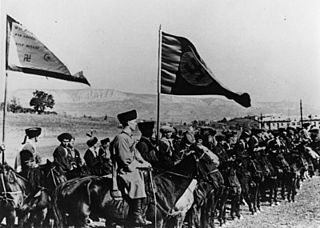
A large number of Soviet citizens of various ethnicities collaborated with Nazi Germany during World War II. It is estimated that the number of Soviet collaborators with the Nazi German military was around 1 million.

The Schutzmannschaft Battalion 201 was a World War II Ukrainian Schutzmannschaft auxiliary police battalion formed by Nazi Germany on 21 October 1941, predominantly from the soldiers of Ukrainian Nachtigall Battalion dissolved two months prior and the Roland Battalion. The battalion was part of the Army Group Centre that operated in Belarus.

The Free Arabian Legion was the collective name of several Nazi German units formed from Arab volunteers from the Middle East, notably Iraq, and North Africa during World War II.
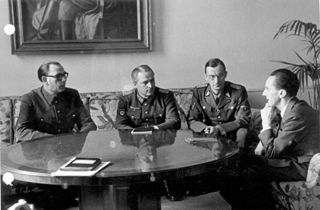
Among the approximately one million foreign volunteers and conscripts who served in the Wehrmacht during World War II were ethnic Belgians, Czechs, Dutch, Finns, Danes, French, Hungarians, Norwegians, Poles, Portuguese, Swedes, Swiss along with people from Great Britain, Ireland, Estonia, Latvia, Lithuania, and the Balkans. At least 47,000 Spaniards served in the Blue Division.
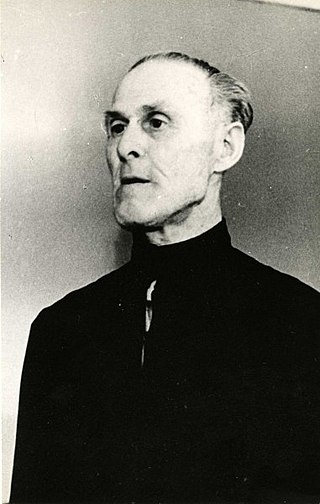
Sultan Shakhanovich Klych-Girey was a Russian and Circassian general of Crimean Tatar descent. A career military officer, Klych-Girey participated in the suppression of Russian Revolution of 1905, fought in World War I and the Russian Civil War for the Russian Empire and White movement before becoming a supporter of Circassian nationalism as a White émigré. During World War II, he collaborated with Nazi Germany and served in Cossack collaborationist units, for which he was repatriated to the Soviet Union and executed by hanging in 1947.


















